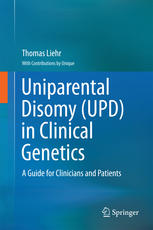

Most ebook files are in PDF format, so you can easily read them using various software such as Foxit Reader or directly on the Google Chrome browser.
Some ebook files are released by publishers in other formats such as .awz, .mobi, .epub, .fb2, etc. You may need to install specific software to read these formats on mobile/PC, such as Calibre.
Please read the tutorial at this link: https://ebookbell.com/faq
We offer FREE conversion to the popular formats you request; however, this may take some time. Therefore, right after payment, please email us, and we will try to provide the service as quickly as possible.
For some exceptional file formats or broken links (if any), please refrain from opening any disputes. Instead, email us first, and we will try to assist within a maximum of 6 hours.
EbookBell Team

4.3
48 reviewsThis book focus on genetic diagnostics for Uniparental Disomy (UPD), a chromosomal disorder defined by the exceptional presence of a chromosome pair derived from only one parent, which leads to a group of rare diseases in humans. First the molecular and cytogenetic background of UPD is described in detail; subsequently, all available information of the various chromosomal origins and the latest findings on genotype-phenotype correlations and clinical consequences are discussed.
Numerous personal reports from families with a child suffering from a UPD-induced syndrome serve to complement the scientific and clinical aspects. Their experiences with genetic counseling and living with a family member affected by this chromosomal aberration present a vivid picture of what UPD means for its victims.